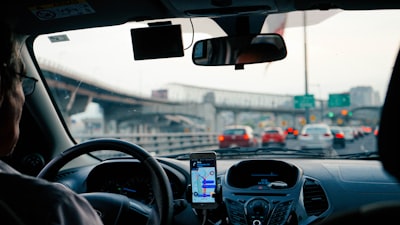One of the prime reasons that most people buy car insurance is because they want it to help them cover their repair costs if their vehicle ever sustains damage. Most auto policies provide physical damage insurance, and this coverage can be a lifesaver if you ever feel that you might struggle to pay for the costs of accidents or other losses. 
However, physical damage insurance is not something that you can buy without a second thought. Your coverage must be tailored to you, and you cannot assume that your auto policy will automatically supply the benefits you need. Therefore, it helps to work with your auto insurance agent to figure out exactly how to structure these benefits to your advantage.
Let’s take a closer look at auto insurance for physical damage and learn more about how best you can apply this coverage to your own vehicle.
When will physical damage insurance cover me?
Physical damage auto insurance covers damage to both the interior and exterior of your vehicle. It can help you pay either for repairs to a partially damaged vehicle or for an entirely new vehicle if your current car is beyond repair. However, it does not apply to every type of damage. Therefore, you cannot use it indiscriminately.
Car insurance is designed to help you pay when you encounter unexpected, unavoidable vehicle issues. These might be wrecks, vehicle fires, vandalism or other unpreventable problems. These are not issues like standard maintenance, flat tires, intentional damage by the owner, or damage caused when you try to make modifications to the vehicle. Therefore, while you might be able to file a claim for cost help following a wreck, you cannot file one for your everyday vehicle upkeep needs.
What types of coverage does my policy offer?
The good thing about physical damage coverage is that it will help you pay for your own damage costs regardless of whether you or someone else were at fault for a wreck. Most auto insurers offer two distinct types of coverage:
- Collision Insurance: This coverage will pay for your vehicle damage following a wreck, regardless of whether it is a single- or multi-vehicle accident.
- Comprehensive Damage Insurance: If your car gets damaged by something other than a wreck, then comprehensive insurance will pay for the damage. It will often cover damage caused by fires, hail, falling objects, flooding, theft, vandalism and animal strikes.
Despite its name, comprehensive coverage does not cover damage from wrecks, too. Therefore, you’ll have to buy both types of coverage in order to achieve the highest levels of protection.
Most auto insurance policies do not automatically include physical damage insurance because this benefit is not required in most states. As a result, you need to be sure to ask your agent to include it in your quote when you enroll in your policy.
How much will my physical damage coverage pay me?
Depending on the structure of your auto policy, the amount of compensation you will receive for a physical damage claim can vary. Some of the factors that might influence your plan are:
- Your policy deductibles, which outline the share of your damage costs that you must pay before your insurer pays the rest of your claim. For example, if you have a $1,000 collision deductible, then your vehicle must sustain more than $1,000 in damage before your insurer will pay for your claim. So, if you need $3,000 worth of repairs, then your insurer will pay $2,000 while you will be responsible for the remaining $1,000.
- Whether the car is totaled or partially damaged. If your insurer determines that your car is beyond repair, then they will settle with you for the value of the car. However, if you only have partial damage, then your insurer will pay for the value of the requisite repairs. Your deductibles will apply in either case.
- Whether your plan includes actual cash value (ACV) or replacement cost value (RCV) coverage. If you total your car, then an ACV plan will pay based on the used value of the car at the time of the accident. An RCV plan will pay a value that is close to the cost of a new car of similar make and model.
Do I need any other coverage?
The standard collision & comprehensive benefits in your auto policy can be far reaching. Still, you might need added benefits to help enhance them.
- If you total a financed or leased car, then gap insurance can help you pay off the difference between the value of your loan and the settlement you receive for the value of your car.
- If you install custom parts (chrome plating, rims, high-def stereos) on your vehicle, you will likely need a custom parts endorsement on your policy.
- Some policies supply separate glass insurance to help drivers cover broken windshields. The deductibles and other terms will differ from those of collision or comprehensive benefits.
Start your search for physical damage insurance by talking to your dealer and your vehicle financer. Most lenders require drivers to carry physical damage insurance, and they can let you know what minimum amounts of coverage you can use to your advantage.